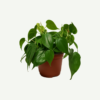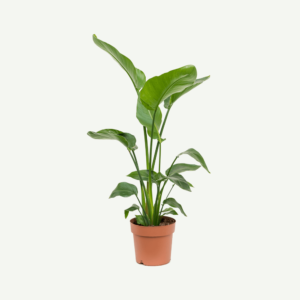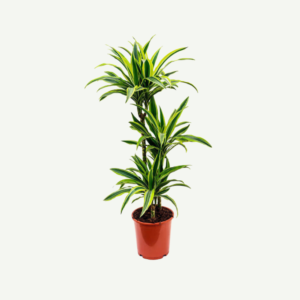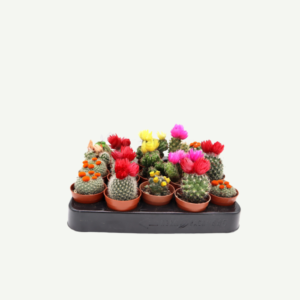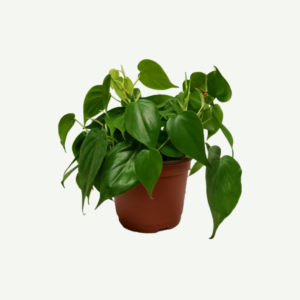Philodendron is a diverse and popular genus of tropical houseplants from the Araceae family. Native to the rainforests of Central and South America, these plants are widely cherished for their attractive foliage, easy care, and adaptability to various indoor conditions. There are many species and cultivars of Philodendron, each with its unique leaf shapes, sizes, and patterns, making them versatile choices for interior decoration.
Care of Philodendron:
Light: This plant generally prefer bright, indirect light. They can tolerate lower light conditions, but their growth may slow down, and their foliage may not be as vibrant. Avoid exposing them to direct sunlight, as this can lead to leaf burn.
Temperature: This Plant thrive in average room temperatures between 65°F to 80°F (18°C to 27°C). They can tolerate slightly cooler temperatures, but frost or freezing temperatures should be avoided.
Watering: Allow the top inch of the soil to dry out before watering again. Philodendrons prefer slightly moist soil but can tolerate some drying out between waterings. Overwatering can lead to root rot, so it’s essential to avoid waterlogged soil.
Humidity: This plant appreciate higher humidity levels, especially if they have large, thin leaves. Regular misting or placing the plant in a location with increased humidity, such as a bathroom or near a humidifier, can be beneficial.
Soil: A well-draining potting mix formulated for tropical plants is suitable for Philodendrons. A mix that retains some moisture without becoming waterlogged works well.
Fertilization: Fertilize this plant every 4-6 weeks during the active growing season (spring and summer) with a balanced, diluted liquid fertilizer. Avoid overfertilization, as excessive nutrients can harm the plant.
Characteristics of Philodendron:
Leaves: These plants plants have large, glossy, and heart-shaped leaves, although leaf shapes can vary significantly among different species and varieties. Some have deeply lobed leaves, while others may display unique split or variegated patterns, enhancing their decorative appeal.
Growth Habit: These plants are mostly vining or climbing plants in their natural habitat. As indoor houseplants, they can be trained to climb up a moss pole or trellis, or they can be allowed to trail and cascade from a hanging basket or shelf.
Aerial Roots: Like the Monstera, Philodendron plants also have aerial roots that help them attach to surfaces and climb. These roots can be utilized for vertical growth support if trained accordingly.
Flowers and Fruits: These plants can produce inflorescences with small, inconspicuous flowers. However, these flowers are rarely seen when grown as indoor houseplants, and they are not the primary attraction of the plant. Some Philodendron species may develop small, berry-like fruits after flowering.
Landscape Use of Philodendron:
Philodendrons are primarily grown as indoor houseplants due to their sensitivity to cold temperatures and frost.
They are often used in homes, offices, and other indoor spaces, where their lush and decorative leaves add a touch of tropical beauty and create a welcoming and green environment.
Some Philodendron species are suitable for outdoor landscaping in warmer climates, where they can be used in shaded areas or as climbers on walls or trees.
Overall, Philodendrons are versatile and rewarding houseplants that have become favorites among indoor plant enthusiasts and collectors. Their attractive foliage and easy care requirements make them an excellent choice for both beginner and experienced plant owners looking to add greenery and a touch of the jungle to their living spaces.

